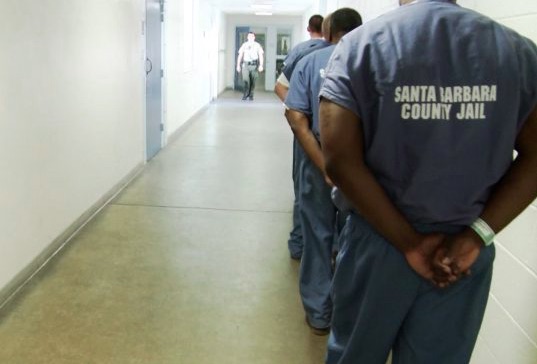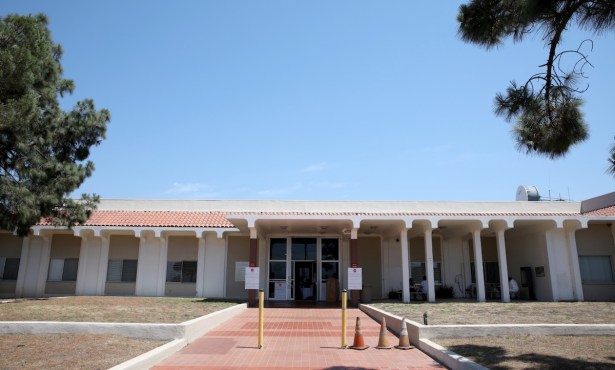The Racial Disparities in Santa Barbara’s Criminal Justice System
People of Color Arrested, Jailed, and Convicted Many More Times than White People

In a quietly groundbreaking moment, the Board of Supervisors got an up-close and almost impersonal look at how differently the conveyor belt of the county’s criminal justice system treats people of color as opposed to individuals with white skin. A brief 12-page study prepared by the County’s Probation Department tracked six key decision points from point of arrest all the way through to sentencing for both juveniles and adults. It statistically calibrated the results to determine whether Black and brown individuals were overrepresented in the criminal justice system relative to their numbers countywide. The punch line of the report — known as a Relative Rate Index study, or RRI for short — is that they very much are.
For example, youth of color — who make up 63 percent of the county’s juvenile population — were 2.6 times more likely to be arrested than their white peers. They were 2.4 times more likely to be booked into juvenile hall, 1.7 times more likely to face criminal charges, and 1.5 times more likely to be committed to some form of detention as a result of their interaction with the criminal justice system.
Based on the metrics of such analysis, a rating of 1 indicates no disparate treatment. Anything greater than 1 indicates disparate treatment.
Looking at Black and Latinx adults — who combined make up 44 percent of the county’s population 18 years old or greater — a similar trend emerges. The report concluded that Black people were 3.5 times more likely to be booked into County Jail than their white counterparts, 0.7 times less likely to be placed in pre-trial supervision, equally likely to get sent to County Jail, and 1.8 times more likely to be sentenced to state prison. Latinx individuals were 1.4 times more likely to get booked than white people, 0.6 percent less likely to receive pre-trial supervision (diversion), 1.2 times more likely to be sentenced to County Jail, and 2 times more likely to be sent to state prison.

Delivering the report with striking understatement were Probation Chief Tanja Heitman, acting Santa Barbara Police Chief Barney Melekian, and Karyn Milligan, manager of research for special projects for County Probation. The report, they agreed, raised more questions than it answered but provided a critically needed statistical starting point for any ensuing public conversation as to possible changes. The issue of poverty, for example, was not addressed as a determinative factor. Nor were any prior contacts made between the accused and law enforcement — or the severity of the alleged offenses — that might explain, for example, why juveniles of color were picked up at higher rates than white juveniles. All took pains not to place blame or to characterize the criminal justice system as racist. But as subdued as their presentations were, they all clearly agreed change was needed.
Probation Chief Heitman likened the situation to a public health crisis in which people in one neighborhood are dying in disproportionately high numbers because of a tainted water supply. No matter how well they are treated by their receiving hospital — and what changes are made to improve their quality of medical care, she argued, can make the problem go away. To the extent the problem can be fixed, Heitman argued, the disparities needed to be addressed long before the criminal justice system got involved. Amplifying her remarks, Police Chief Melekian commented that the criminal justice system is “populated by people with good intention” operating in a system that does two things “that demand improvement.” The first, he said, is that it ignores historical factors that bring people of certain communities into contact with the system in the first place. The second is that it assumes everyone “can and should be treated in an identical fashion regardless of the circumstances.”
Supervisors Gregg Hart and Das Williams, both ardent champions of criminal justice reform, embraced the report’s findings for providing “a data driven, fact based” starting point for future conversations to come. Supervisor Steve Lavagnino noted how the Probation Department had been researching ways to address race-based disparities since he was first elected in 2012 and that this study should not be dismissed as a trendy response to renewed interest in criminal justice reform in the wake of the George Floyd murder. Lavagnino said he was eager to study the impacts of poverty in the outcome. How would the system treat a poor brown kid as opposed to a poor white kid, he wondered, or a rich brown kid?
Supervisor Bob Nelson, perhaps the most conservative member of the board, expressed similar interest in determining whether it was race or socioeconomics driving the disparities. He also expressed concern that the report could be seized upon those intent on showing that the system was racist. “Yeah, we’re broken, but not in the sense this shows our criminal justice system is racist,” he said. “I don’t want this to further that narrative.” But in the same breath, Nelson expressed openness to the possibility that further research might show the system might, in fact, be racist, even though he didn’t think so now.
Strikingly, only one member of the public spoke. Andy Caldwell, conservative government watchdog with the Coalition of Labor, Agriculture and Business, expressed outrage the report did not include information about gang membership, particularly in the North County where he said there were 2,000 gang members. He also blamed the environmental movement for destroying the sort of high paying jobs capable of keeping families out of poverty.
More striking still was the broad sense of agreement among boardmembers of divergent political inclinations that the criminal justice system was not yielding desirable results and that it was in need of some serious tweaking. Supervisor Joan Hartmann expressed alarm over the disparities the report indicated for youthful offenders “every step of the way” and wondered what programs the supervisors could support to modify their life trajectories at early ages. But she was definite that change was needed. “Change is coming,” she stated, noting that 63 percent of the county’s juvenile population was either Black or Latinx. “Where do we get more bang for our buck?” she asked. “Preschool? Wellness programs?”
Heitman’s answer? “Yes, to all of the above.”
Support the Santa Barbara Independent through a long-term or a single contribution.




You must be logged in to post a comment.